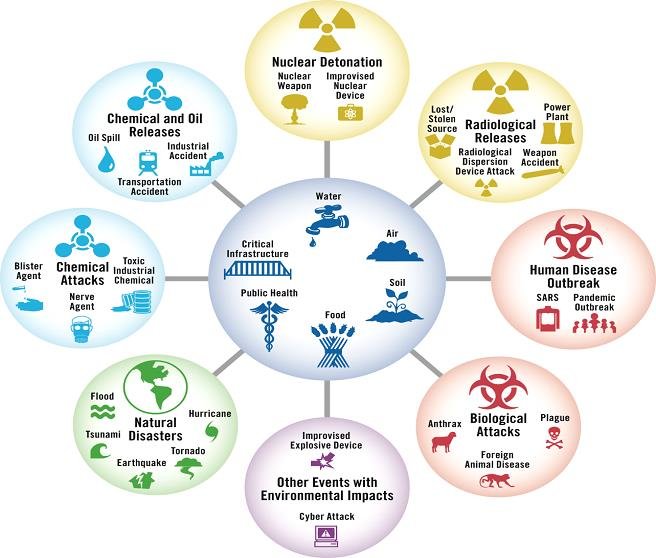All Disasters and Hazards
Material and waste management are a critical part of the response and recovery to disasters and hazards:

This is a hub and spoke infographic showing disasters and hazards that a community may need to plan for. In the hub of the graphic are icons and words for water, air, soil, food, public health, and critical infrastructure, which could all potentially be affected by the disasters and hazards in the spokes surrounding the hub. The spokes contain the disasters and hazards, which are shown in words and icons:
- Natural disasters, including earthquakes, floods, tsunamis, hurricanes, and tornados.
- Chemical attacks, including blister agents, nerve agents, and toxic industrial chemicals.
- Chemical and oil releases, including oil spills, industrial accidents, and transportation accidents.
- Nuclear detonation, including nuclear weapons and improvised nuclear devices.
- Radiological releases, including from power plants, weapon accidents, radiological dispersion device attacks, and lost/stolen sources.
- Human disease outbreak, including severe acute respiratory syndrome (SARS) and pandemic outbreaks.
- Biological attacks, including Anthrax, foreign animal diseases, and plague.
- Other events with environmental impacts, including improvised explosive devices and cyber attacks.
